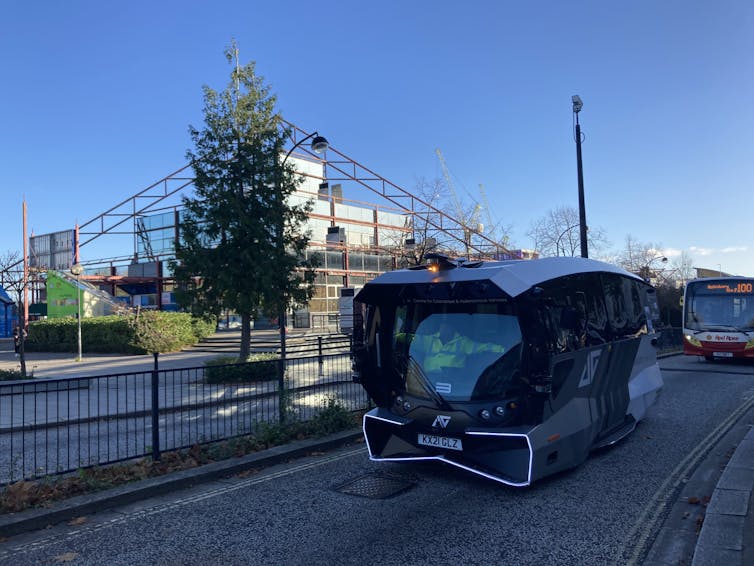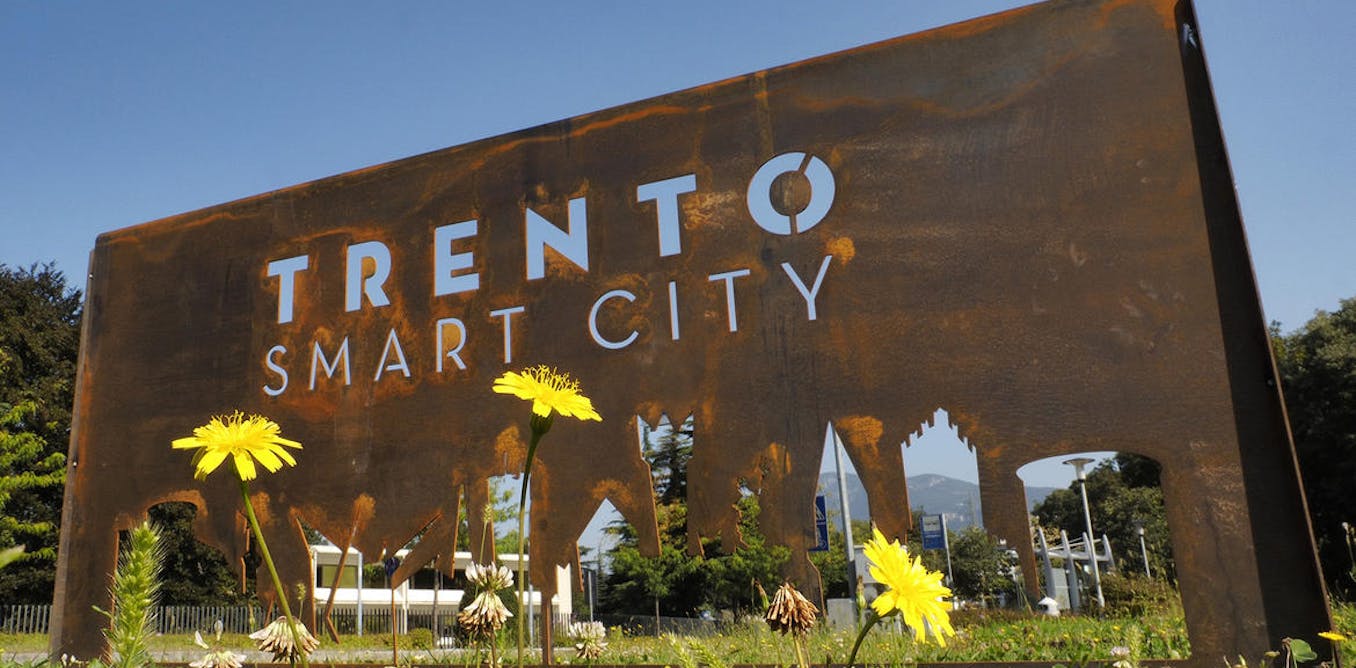Autonomous self-driving cars and taxis are already on the roads of San Francisco and Beijing. There are also autonomous tram-style services around Oxfordshire and Dubai.
Now researchers in the Italian city of Trento are planning to pilot a scheme of autonomous 17-seater shuttle buses which can divert to the homes of travellers. The first stage of the “robot buses” pilot is expected to cover the historic city centre, where approximately ten vehicles powered by clean hydro-electric energy will operate for up to 18 hours per day.
The pilot is expected to be initially funded by government grants to demonstrate the reliability of this type of vehicle, improving user acceptance so the service could then use private funding to grow to move beyond the city. The starting date is not yet confirmed.
The plan is that members of the public would use an app to call for an autonomous, AI-driven bus to pick them up. A similar transport system already exists using human drivers (for example, there is an app-based Bus on Demand operating in Coventry, UK). Some on-demand bus services, such as Mi-link in Oxfordshire, even use autonomous vehicles, but not to the level of digital integration being explored in Trento.
The Trento pilot plans to use smart roads around the city, part of a national project, where the roads communicate with the autonomous vehicles so that they can have the data it needs to make split-second decisions. This provides driverless vehicles with information about unforeseen events and allows complex coordination and collaborative manoeuvres where driverless vehicles communicate with the roads and with each other.
Read more:
Self-driving buses that go wherever you want? How the UK is trying to revolutionise public transport
Toyota
The idea behind the project is that one-to-one replacement of cars or taxis with autonomous vehicles would add a bit of convenience but would not do much for congestion or emissions. It could even be counterproductive if the increased convenience encourages people to travel more.
A more positive scenario is possible when AI enables new transport models such as the driverless shuttle. The Trento team estimate that replacing 100,000 private petrol cars with 5,882 shared electric shuttles could potentially yield around a 92% annual CO2 reduction – an impressive figure, but one that can only be achieved if riding a shuttle becomes more attractive and convenient than driving a car.
Read more:
Driverless cars: what we’ve learned from experiments in San Francisco and Phoenix
Conventional bus services simply are not a sufficiently attractive alternative to car use outside the dense centres of major cities. as they are often infrequent and don’t come close to people’s homes in many cases.
If a new type of public transport could offer a better alternative, then more environmental benefits could emerge. Think of a system where you don’t need to conform to bus timetables and operating times – or even bus routes. The bus comes to you when you call it and takes you where you want to go. Driverless taxis can offer that, but at a higher cost not only financially, but also in terms of congestion and energy consumption.
The planned Trento design is where you have small shared autonomous vehicles offering travel at bus level fares – or lower. The use of driverless vehicles offers potentially radical improvements to the cost and quality of the service that could result in people preferring this type of shuttle to driving their cars.
Small driverless shuttles could operate more frequently and flexibly and even operate a 24/7 service. As the plan is to combine bookings to pool the journeys of passengers going in the same direction, the cost of the ride (which was already low on account of not paying for the driver) becomes even lower for a shared ride.
Read more:
AI can boost economic growth, but it needs to be managed incredibly carefully
Vehicle automation is perceived as having potential risks and benefits. On the one hand, there is a clear risk that jobs in the transport industry will disappear. On the other, autonomous transport will help ensure that people without cars or those unable to drive can maintain access to work.
This kind of public transport system that offers a convenient alternative to personal car use would substantially reduce environmental impact, reduce congestion for all and make for more socially inclusive towns and cities. As the service provides a level of convenience close to that of a taxi, but a cost similar or lower than that of a bus, the possibility of moving society away from car dependence could become more realistic.
Environmentally, it has been estimated that adoption of driverless vehicles in major cities could result in a reduction of up to 34% of the total carbon emissions from transportation by 2050.

Author provided (no reuse)
What’s happening elsewhere?
Globally other systems are being explored and are likely to emerge in the next few years. Milton Keynes in the UK already operates a small vehicle service booked by app.
The service creates “virtual bus stops” that pick up and drop passengers in locations that are close to their homes and are also convenient to other passengers sharing the same vehicle.
Unlike the Trento service, the service in Milton Keynes is operated by human drivers. Potentially, this limits the flexibility of the service as humans cannot, and should not, operate 18 hours a day without breaks and the number of drivers available limits the size of the fleet.
There are plans to expand this with small autonomous buses on fixed routes, but trials so far have always had a human driver on board for safety purposes.
Projects, such as the one in Trento, plus other emerging autonomous vehicle service systems, start to move cities towards a reinvention of public transport using high-tech advances. This means public transport could appeal to more people if it becomes more convenient and cheaper. It, therefore, has the potential to persuade more people to leave their cars at home, with big benefits for the planet.

Don’t have time to read about climate change as much as you’d like?
Get a weekly roundup in your inbox instead. Every Wednesday, The Conversation’s environment editor writes Imagine, a short email that goes a little deeper into just one climate issue. Join the 47,000+ readers who’ve subscribed so far.
